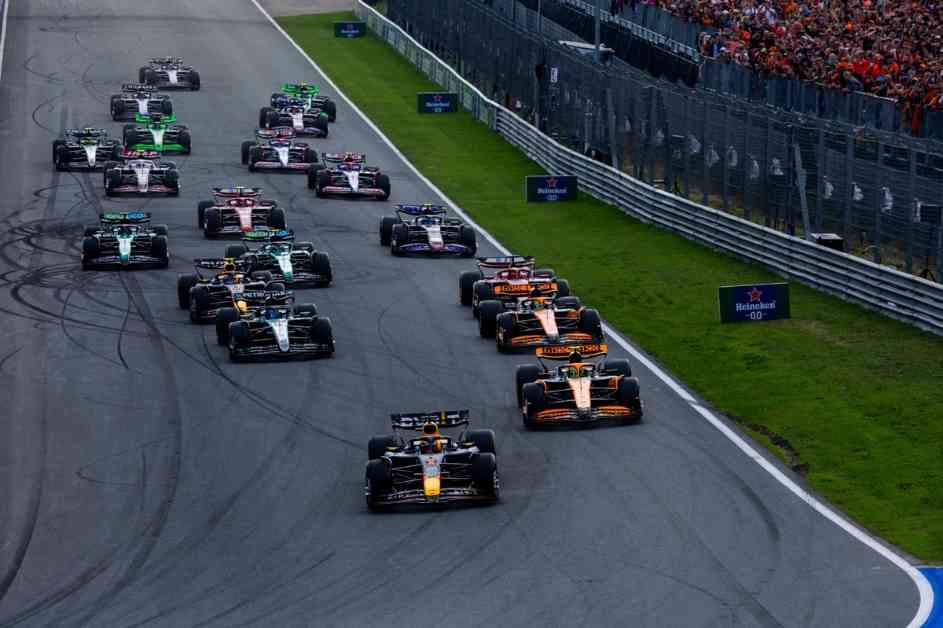McLaren’s Struggling Starts: Causes, Solutions, and Strategies for Improvement
McLaren’s recent struggles with poor starts have not gone unnoticed, with the team acknowledging the need to address this issue head-on. While driver Lando Norris managed to recover from a poor getaway to win the Formula 1 Dutch Grand Prix, it has become evident that McLaren needs to focus on improving its starts to remain competitive against top teams like Red Bull and Mercedes.
Andrea Stella, McLaren’s team boss, highlighted the significance of strong starts in a recent statement, pointing out missed opportunities due to poor launches. At the Dutch Grand Prix, both Norris and teammate Oscar Piastri faced challenges with wheelspin, resulting in lost positions and missed chances to challenge for podium finishes.
The Complexity of Start Troubles
The struggles with starts at McLaren have been a recurring theme throughout the season, particularly affecting Norris. From the Spanish Grand Prix to the Hungarian Grand Prix and most recently at Zandvoort, McLaren has faced challenges with getting off the line cleanly and efficiently.
While many may attribute these issues solely to the drivers, it is essential to recognize the role that teams play in maximizing getaways. The technical factors at play during a start are numerous, requiring a delicate balance of clutch engagement, throttle control, and tire grip to achieve an optimal launch.
The Evolution of Race Starts
In recent years, the FIA has implemented regulations to give drivers more control over starts, reducing the influence of engineers in the process. Strict guidelines govern the mapping and operation of clutches, ensuring that drivers have a direct impact on their launch performance.
Teams must adhere to rules regarding clutch paddles, mapping, and positioning to prevent any unfair advantages. The days of engineers dictating launch control settings are long gone, placing the responsibility squarely on the shoulders of the drivers to execute flawless starts.
Nailing the Perfect Start
Achieving the perfect start in Formula 1 requires mastering three distinct phases: the initial getaway, the second phase acceleration, and the final acceleration phase. Each phase presents unique challenges, from finding the optimal clutch bite point to managing wheelspin and maximizing acceleration.
Analysis of Norris’s start issues has shown a common trend of struggles in the second phase, where slight variations in clutch release can make a significant difference in performance. At Zandvoort, Norris’s wheelspin during acceleration cost him valuable time, highlighting the critical role of precise clutch control in a successful start.
The Challenge of Consistency
Consistency is key to delivering better race starts, requiring teams to learn from past mistakes and make continuous improvements. McLaren is currently undergoing a process of refinement to address its start woes and enhance performance on the grid.
The contrast between good and bad starts becomes more pronounced at the front of the grid, where even minor errors can have a significant impact on race outcomes. The competitive nature of Formula 1 demands a relentless pursuit of perfection in starts, as teams strive to match the efficiency of top contenders like Red Bull and Mercedes.
Strategies for Improvement
Optimizing race starts is a collaborative effort that involves both drivers and engineers working together to fine-tune various elements of the launch process. From tire preparation to clutch settings and throttle control, every detail must be meticulously calibrated to achieve the best possible start.
Constant review and adjustment are essential in the quest for improved starts, as teams seek to identify areas for enhancement and implement changes accordingly. McLaren’s focus on incremental improvements reflects a commitment to excellence and a willingness to adapt to evolving conditions on the track.
Conclusion
In conclusion, McLaren’s struggles with poor starts have highlighted the complexity and challenges associated with launching a Formula 1 car. While drivers play a crucial role in executing flawless starts, teams must also provide the necessary support and resources to maximize performance on the grid.
By addressing technical factors, refining clutch control, and fostering a culture of continuous improvement, McLaren can overcome its start troubles and position itself as a formidable contender in the competitive world of Formula 1. With a strategic approach and a commitment to excellence, McLaren can rise to the challenge and achieve success on the track.
